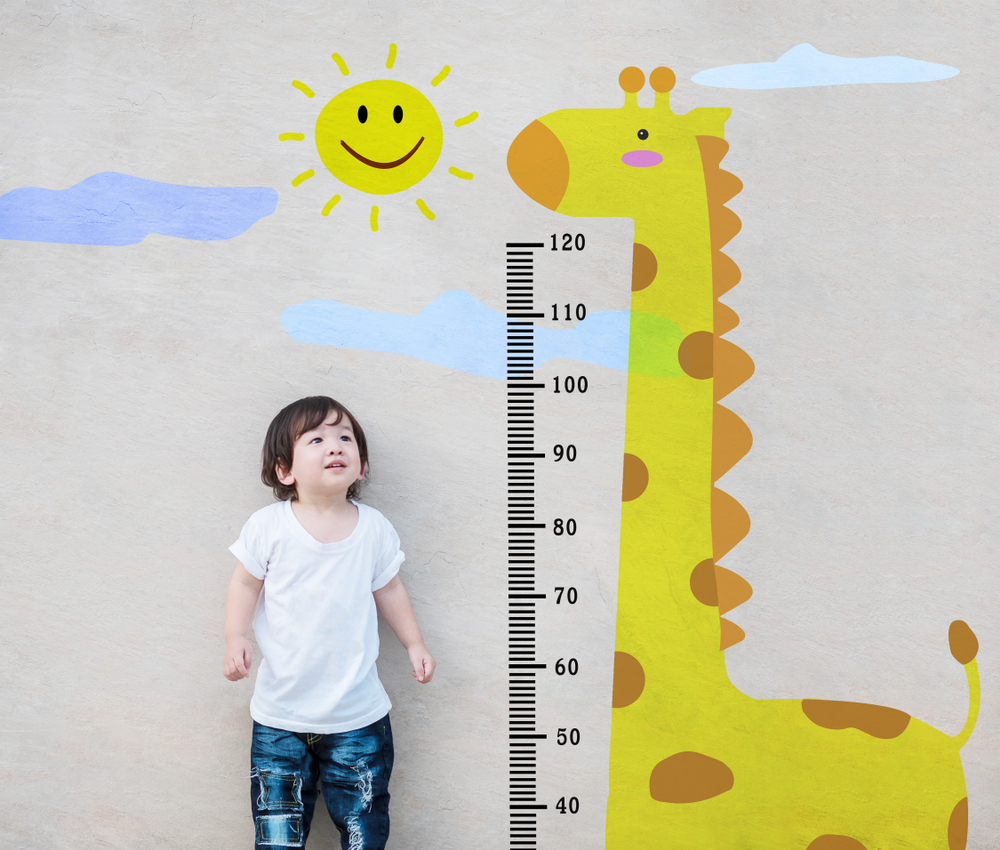Counting skills Measurement Worksheets for Ages 3-7
7 filtered results
-
From - To
Enhance your child's early math skills with our Counting Skills Measurement Worksheets designed for ages 3-7! These engaging and interactive worksheets make learning fun while helping kids master essential counting concepts. From counting objects to comparing measurements, each activity fosters critical thinking and strengthens foundational math abilities. Perfect for parents and educators, our resources support various learning styles and ensure a well-rounded understanding of counting and measurement. Encourage your little ones to explore the exciting world of numbers through colorful, age-appropriate worksheets that promote both individual learning and cooperative play. Start building a strong math foundation with our worksheets today!


Fruit Math: Picture Graphs Worksheet
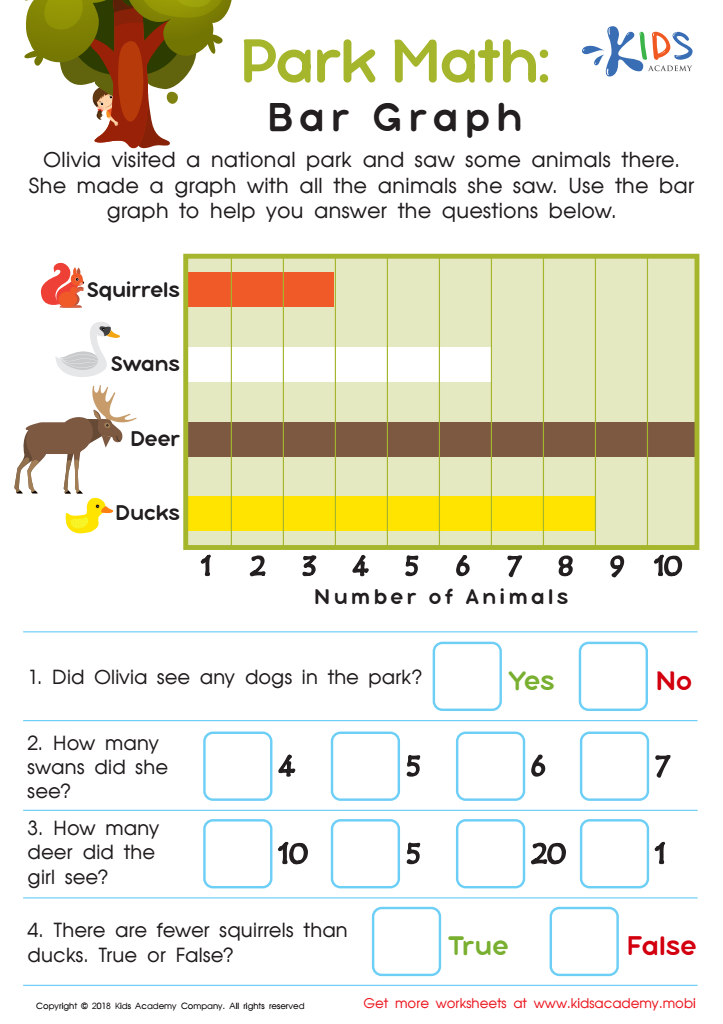

Park Math: Bar Graph Worksheet
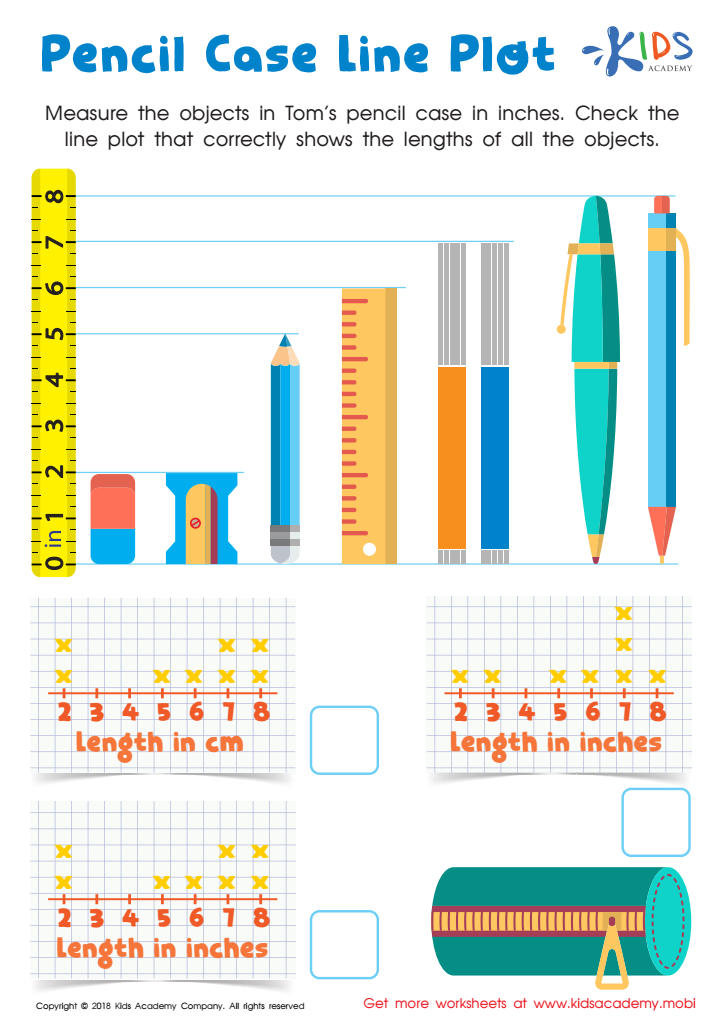

Pencil Case Line Plot Worksheet


Data: Assessment 2 Worksheet
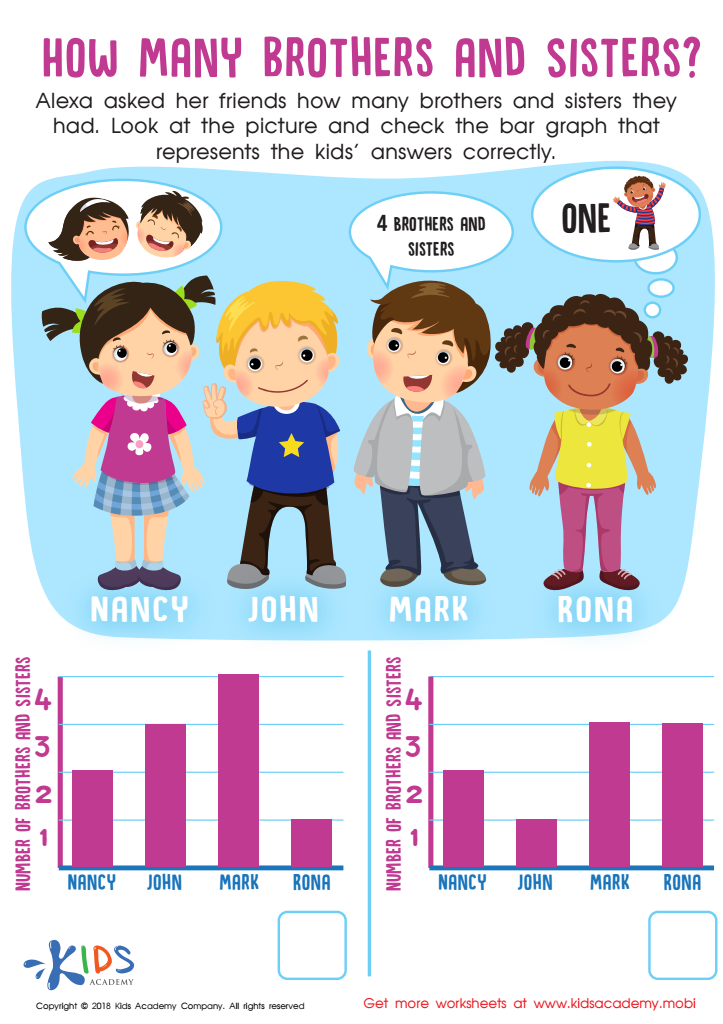

How Many Brothers and Sisters? Worksheet
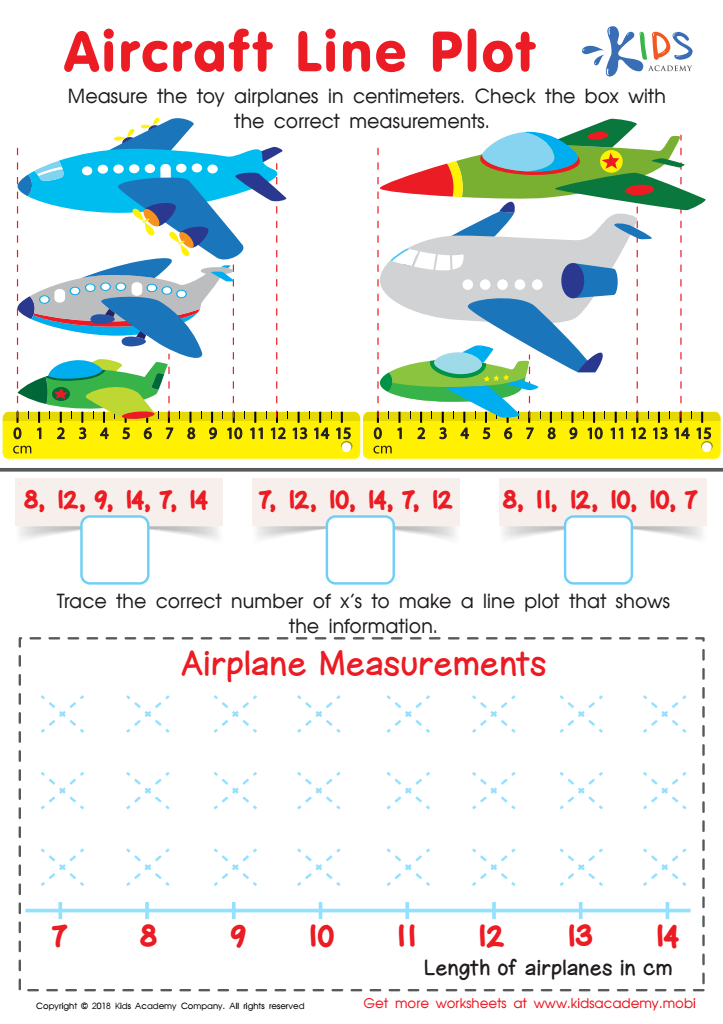

Aircraft Line Plot Worksheet
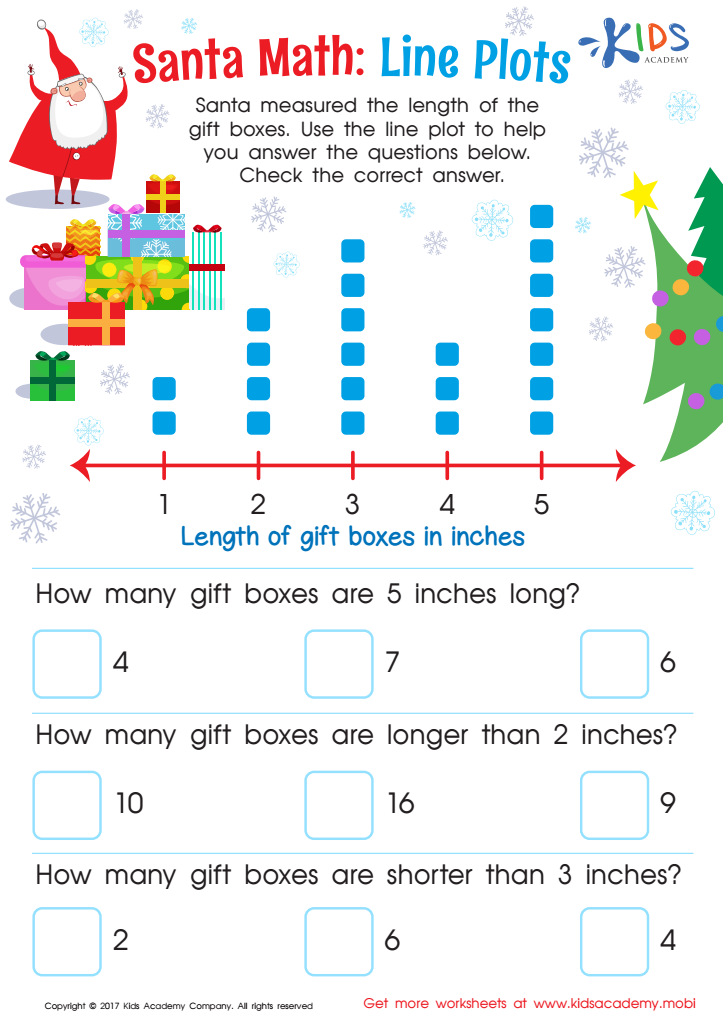

Line Plot Worksheet
Counting skills and measurement are fundamental components of early childhood education that significantly influence a child's cognitive development. For children aged 3-7, these skills serve as the foundation for numerous critical life competencies. At this age, children are highly receptive to learning through hands-on activities, making it the perfect time to introduce concepts of numbers and measurements.
First, counting skills enhance a child's ability to recognize patterns and understand quantities. This understanding aids in developing logical thinking and problem-solving skills, which are essential for later academic success in subjects such as math and science. Furthermore, counting fosters early numeracy, empowering children to navigate real-world situations that require numerical reasoning, such as sharing items or counting their toys.
Measurement skills are equally important, as they enable children to compare, contrast, and quantify objects in their environment. Understanding concepts like length, weight, and volume encourages accurate thinking and promotes exploration and curiosity about their surroundings. Teachers and parents can nurture these skills by incorporating fun, interactive activities such as counting objects, measuring ingredients while cooking, or engaging in games involving numbers and measurement. By investing in the development of these essential skills early on, educators and parents equip children with tools that are crucial for lifelong learning and everyday functioning.
 Assign to My Students
Assign to My Students










